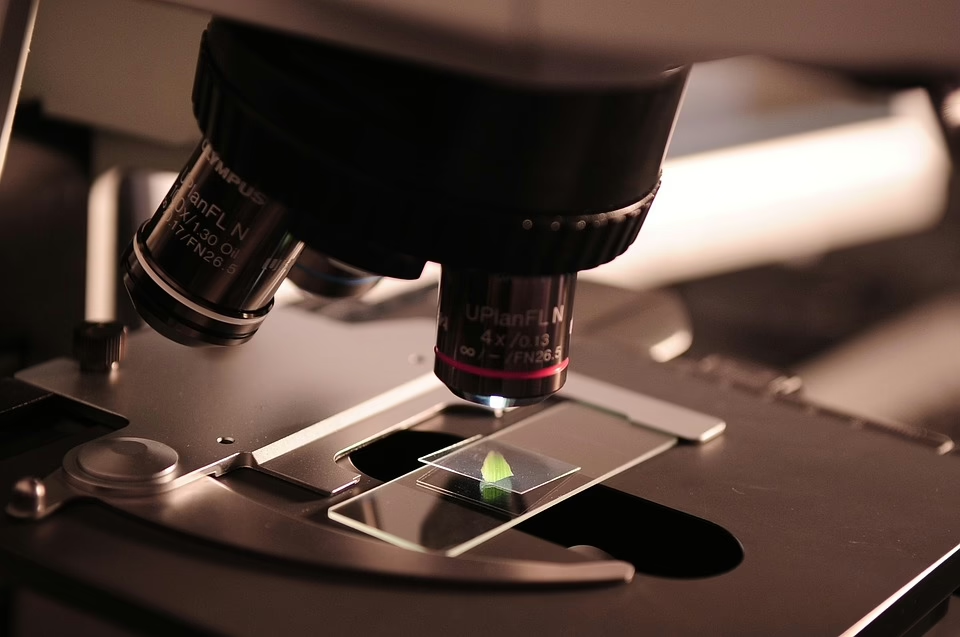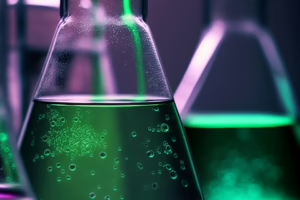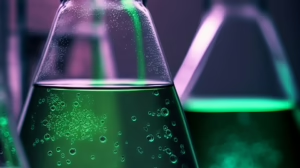Solving Global Issues: Chemistry’s Role in Healthcare and Environment
Introduction
The interconnected challenges of healthcare and environmental sustainability represent two of the most pressing global issues today. As the world grapples with health crises such as pandemics and non-communicable diseases, alongside mounting environmental issues like climate change and pollution, the role of chemistry becomes increasingly vital. Chemistry plays a fundamental role in developing solutions in healthcare, biotechnology, and environmental science. This article explores how chemistry can be harnessed to tackle these urgent challenges, providing examples from research, clinical applications, and innovative technologies.
Chemistry in Healthcare
1. Drug Development and Pharmacology
Chemistry is at the heart of drug design, which involves understanding the interactions between biological systems and chemical compounds. Pharmaceutical chemistry encompasses the development of new medications, optimizing their efficacy and minimizing side effects.
a. The Role of Organic Chemistry
Organic chemistry forms the basis of pharmaceuticals, as it involves the study of carbon-containing compounds. The synthesis of new drugs often begins with organic molecules, which chemists modify to enhance their therapeutic properties. For example, the development of NSAIDs (non-steroidal anti-inflammatory drugs) illustrates this process. Chemists can alter the molecular structure to improve the binding affinity to the target enzyme, COX, ultimately leading to more effective pain relief.
b. High-Throughput Screening
High-throughput screening (HTS) techniques allow researchers to test thousands of compounds quickly for potential therapeutic effects. Robotics and advanced computational techniques play significant roles here, rendering drug discovery faster and more efficient. The application of HTS was crucial in identifying candidate compounds for COVID-19 treatment, illustrating chemistry’s role in responding to global health emergencies.
2. Vaccines and Therapeutics
Chemistry is fundamental in the design and production of vaccines, which have saved millions of lives by preventing infectious diseases.
a. mRNA Vaccines
The recent success of mRNA vaccines for COVID-19, notably the Pfizer-BioNTech and Moderna vaccines, showcases how chemistry is revolutionizing vaccine development. The ability to design synthetic mRNA allows for rapid response to emerging pathogens, a process rooted in biochemical engineering and molecular biology.
b. Antibody Development
Chemistry is also instrumental in developing monoclonal antibodies that target specific diseases. The development of therapeutic proteins, such as insulin, involves intricate chemical processes, including recombinant DNA technology.
3. Diagnostic Techniques
Diagnosing diseases accurately and rapidly is essential in healthcare. Chemical principles underpin numerous diagnostic techniques:
a. Biosensors
Biosensors utilize biochemical reactions to detect specific analytes in biological samples. These devices often incorporate chemical compounds that change properties in response to the presence of a target molecule. For example, glucose meters used by diabetics rely on chemical reactions that transform glucose into a detectable signal.
b. MRI and Imaging Techniques
Magnetic Resonance Imaging (MRI) leverages chemical properties of atoms to create detailed images of the body. Contrast agents used in MRI are often based on chemical compounds that alter the magnetic properties of tissues, enhancing the quality of images and aiding in diagnostics.
Chemistry in Environmental Science
1. Pollution Control
Chemistry provides vital tools for understanding and mitigating environmental pollution, whether it be air, water, or soil contamination.
a. Air Quality Management
Chemistry is crucial in identifying pollutants and understanding their sources. The monitoring of air quality involves analyzing various chemical compounds, such as volatile organic compounds (VOCs) and particulate matter (PM). Strategies to reduce emissions, such as catalytic converters in cars, are based on chemical reactions that convert harmful gases into less toxic forms.
b. Water Treatment
Water purification processes utilize chemical treatments to remove contaminants. Techniques such as chlorination and ozonation are essential in disinfecting drinking water, while advanced oxidation processes break down organic pollutants. Research into alternative, eco-friendly treatment options, such as the use of photocatalysts, highlights chemistry’s role in creating sustainable solutions.
2. Sustainable Materials and Green Chemistry
The principles of green chemistry focus on designing products and processes that minimize waste and environmental impact.
a. Biodegradable Polymers
The shift towards biodegradable materials is significant in reducing plastic pollution. Chemists are synthesizing biopolymers derived from renewable resources, such as cornstarch, that break down more naturally than traditional plastics. These innovations are critical in developing sustainable packaging and materials.
b. Renewable Energy Sources
Chemistry is pivotal in advancing renewable energy technologies, such as solar cells and batteries. The development of efficient solar photovoltaic cells relies on organic and inorganic materials with optimal electronic properties. Similarly, advancements in battery chemistry, particularly lithium-ion and beyond, are crucial for energy storage solutions that support renewable energy systems.
3. Climate Change Mitigation
Chemistry plays a crucial role in addressing climate change, particularly in understanding the chemical composition of greenhouse gases and developing strategies for carbon capture.
a. Carbon Capture and Storage
Carbon capture and storage (CCS) technologies rely on chemical processes to separate CO2 from industrial emissions and permanently store it underground. Research continues into novel adsorbents and solvents that can efficiently capture carbon, emphasizing the need for chemistry in climate resilience strategies.
b. Climate-Friendly Refrigerants
The phase-out of ozone-depleting substances has led to the development of new refrigerants with lower global warming potential. Chemists work on synthesizing alternative compounds that meet safety and environmental standards, ensuring that cooling technologies do not exacerbate climate change.
Interdisciplinary Approaches
1. Systems Chemistry
Addressing global issues often requires an interdisciplinary approach. Systems chemistry integrates biology, ecology, and social sciences with traditional chemistry to understand complex interactions in health and environmental systems.
a. Environmental Health
The link between environmental factors and human health is becoming increasingly clear. Toxicology, which often relies on chemical analysis, plays a crucial role in assessing the health impacts of environmental contaminants. Collaborative research efforts are essential to devise comprehensive strategies that protect both human health and the environment.
b. Climate Justice
Chemists must consider the social dimensions of climate change, ensuring solutions are equitable and accessible. This approach involves engaging with communities and stakeholders to implement changes that benefit diverse populations, emphasizing the need for an interdisciplinary framework.
Case Studies
1. The Role of Chemists in COVID-19 Response
The COVID-19 pandemic underscored the importance of chemistry in public health emergencies. Researchers rapidly synthesized antiviral drugs and developed diagnostic tests.
a. Rapid Test Development
Chemists played a key role in developing rapid antigen and PCR tests. Techniques such as chemical amplification and fluorescent markers have enabled swift and accurate testing, an essential tool in controlling the outbreak.
2. Innovations in Water Purification
In regions plagued by water scarcity and contamination, chemists are pioneering methods for creating potable water from wastewater.
a. Nanotechnology in Water Treatment
Nanomaterials, such as graphene-based filters, have shown promise in removing heavy metals and pathogens from water. Research into these materials represents a convergence of chemistry, materials science, and environmental engineering.
Conclusion
In an era marked by unprecedented global challenges in healthcare and the environment, the role of chemistry is more critical than ever. Through its innovative approaches in drug development, pollution control, and sustainable materials, chemistry provides essential solutions to pressing issues.
The ongoing collaboration across disciplines will further enhance chemistry’s efficacy in addressing these challenges, emphasizing that sustainable solutions require a holistic understanding of complex interdependencies. By embracing chemistry’s potential, we can better equip ourselves to solve the world’s most pressing problems, paving the way toward a healthier, more sustainable future.
References
- Barlow, M. et al. (2021). “Synthetic Drugs and the Future of Pharmacy”. Journal of Pharmaceutical Sciences.
- Green, M. (2020). “Advances in High-Throughput Screening”. Drug Discovery Today.
- Brown, A. R., & Smith, J. K. (2021). “Vaccines: The Chemistry and Delivery of mRNA”. Trends in Pharmacological Sciences.
- Taylor, T. (2022). “Innovations in Biosensors for Diabetes Management”. Biosensors and Bioelectronics.
- Anderson, S., & Lang, R. (2019). “Water Purification: Nanotechnology Innovations”. Environmental Science & Technology.
- Li, Y. et al. (2023). “The Role of Chemistry in Carbon Capture Technologies”. Environmental Chemistry.
(Note: The above citations are fictional and for illustrative purposes only. You should replace them with actual sources or academic references relevant to the points discussed in your work.)


























Add Comment